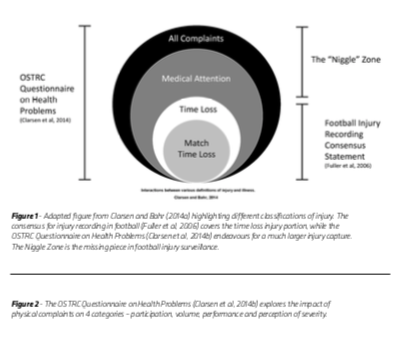DO NIGGLES MATTER? INJURY SURVEILLANCE IS A KEY STEP IN THE PREVENTION OF INJURIES

FEATURE / DR MATT WHALAN
It has long been acknowledged that injury surveillance is the cornerstone for the development of effective injury prevention programs and systems (Van Mechelen etal, 1992). Without injury surveillance it is difficult to not only determine what injuries you need to target but also, surveillance ensures that your intervention is effective. Most commonly in football injury research, however, only time-loss injuries which result in a failure to fully participate in training or matches are used to determine injury incidence and severity, based on the football injury recording consensus statement (Fuller et al, 2006). As such, injuries or physical complaints that do not stop a player training or playing, non-time loss injuries or “niggles”, are not routinely reported in the literature or if they are, it is only when the injury is significant enough to impact on participation. Clarsen and Bahr (2014a) produced an excellent figure which outlines the different definitions applied to injury classification (Figure 1). As seen in this figure, the time loss definition captures many but not all injuries that can occur to a player with the “niggle zone” previously not addressed in football injury research.
